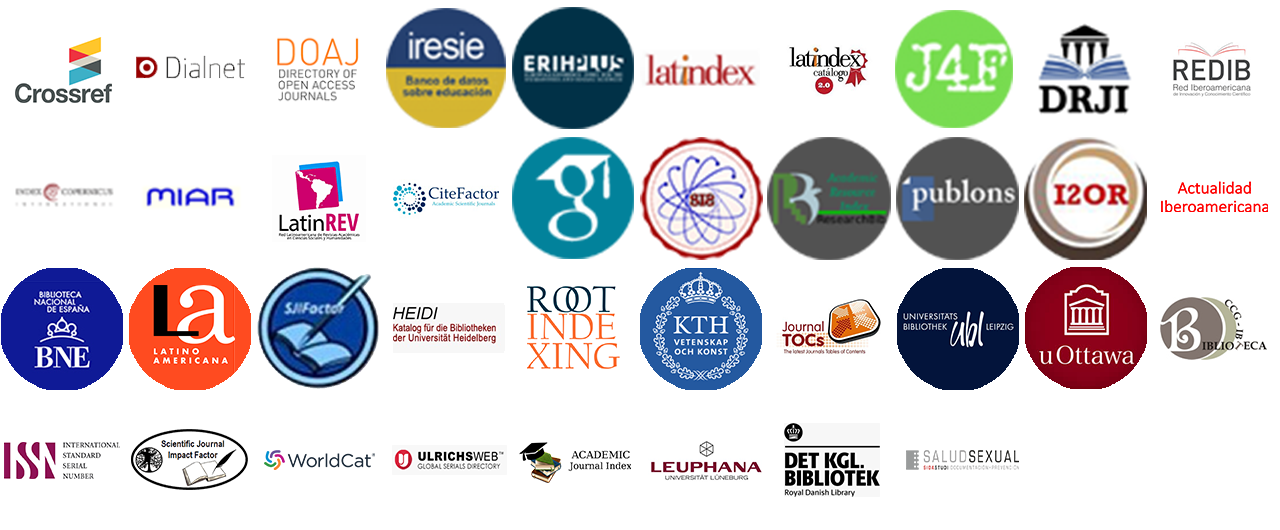Technology in teaching Law Degree. Faculty of Law Mazatlan's teacher's perceptions
DOI:
https://doi.org/10.36825/RITI.11.23.003Keywords:
Teachers, Technologies, Teaching, Law DegreeAbstract
As the legal profession begins to implement digital technology in the management of its services, more educational institutions that offer bachelor's degrees related to criminal sciences, such as Law, have included instruction with technology in their plans and study programs. The perspective of more lawyers with experience in digital tools is an advantage in offering legal services. New technologies, including the Internet, Web 2.0, multimedia, and social media, provide learning, teaching, and research opportunities for legal educators and students. In addition, they potentially streamline collaborations, sharing, and gathering information and feedback on relevant and essential topics. The benefits of computer-assisted instruction in legal education include a systematic approach, transparency, accountability, and innovative ways of communicating ideas through text and images. This paper aims to describe and analyze the use of digital technologies by teachers of the Law Degree of the Mazatlán Law School, of the Autonomous University of Sinaloa, in Mexico, in legal education. For this research, with a quantitative approach of a descriptive-cross-sectional method, a survey designed with 24 items in 3 categories, self-completed by 62 teachers, was applied. Among the main results, it was found that most study subjects consider the use of IT in the classroom necessary, but very few claims to have extensive knowledge of this technology.
References
Referencias
Greaves, K. (2016). Computer-aided qualitative data analysis of social media for teachers and students in legal education. The Law Teacher, 50 (1), 24–43. https://doi.org/10.1080/03069400.2016.1146462
Bone, A. (2009). The twenty-first century law student. The Law Teacher, 43 (3), 222–245. https://doi.org/10.1080/03069400903332496
Jackson, D. (2016). Human-centered legal tech: integrating design in legal education. The Law Teacher, 50 (1), 82–97. https://doi.org/10.1080/03069400.2016.1146468
Chan Chi, G., Cab Canul, M., Ayil Carrillo, J. (2019). Curso virtual para la enseñanza de una asignatura de desarrollo personal. Revista de Investigación en Tecnologías de la Información (RITI), 7 (13), 61-69. https://riti.es/index.php/riti/article/view/123
Lozano Ramírez, M. (2019). Aprendizaje social basado en el uso de dispositivos móviles. Revista de Investigación en Tecnologías de la Información (RITI), 7 (13), 48-52. https://riti.es/index.php/riti/article/view/121
Camacho Ortiz, C., Orozco Guillén, E. (2018). Diseño, implementación y evaluación de un mooc para reducir las horas lectivas en aula en el modelo de educación basada en competencias. Revista de Investigación en Tecnologías de la Información, 6(11), 40-47. https://doi.org/10.36825/RITI.06.11.007
Díaz Rosabal, E., Díaz Vidal, J., Gorgoso Vázquez, A., Sánchez Martínez, Y., Riverón Rodríguez, G., Santiesteban Reyes, D. (2018). Presencia de las TIC en las investigaciones sociales. Revista de Investigación en Tecnologías de la Información, 6 (11), 19-24. https://doi.org/10.36825/RITI.06.11.004
Colmenares Guillén, L., Carrillo Ruiz, M., Jiménez González, F., Hernández Ameca, J. (2017). Problemas generados por el uso de la tecnología en los universitarios. Revista de Investigación en Tecnologías de la Información, 5(10), 13-19. https://doi.org/10.36825/RITI.05.10.003
Sosa Galindo, J., Ruiz Rodríguez, J., Covarrubias Flores, J. (2018). Influencia de los videojuegos en los estudiantes de educación superior. Revista de Investigación en Tecnologías de la Información (RITI), 6 (11), 55-60. https://doi.org/10.36825/RITI.06.11.009
Lavín Zatarain, S., Zaldívar Colado, A., Rodelo Moreno, J., Zaldívar Martínez, J. (2019). Utilización del smartphone por estudiantes del nivel superior. Revista de Investigación en Tecnologías de la Información (RITI), 7 (14). https://doi.org/10.36825/RITI.07.14.008
Ayil Carrillo, J. (2018). Entorno virtual de aprendizaje: una herramienta de apoyo para la enseñanza de las matemáticas. Revista de Investigación en Tecnologías de la Información (RITI), 6 (11), 34-39. https://doi.org/10.36825/RITI.06.11.006
Newbery-Jones, C. (2016). Ethical experiments with the D-pad: exploring the potential of video games as a phenomenological tool for experiential legal education. The Law Teacher, 50 (1), 61–81. https://doi.org/10.1080/03069400.2016.1146465
Maharg, P. (2016). Disintermediation. The Law Teacher, 50 (1), 114–131. https://doi.org/10.1080/03069400.2016.1146473
Smith, M. (2019). Integrating technology in contemporary legal education. The Law Teacher, 1–13. https://doi.org/10.1080/03069400.2019.1643647
Kirley, E. A. (2015). Are we ethically bound to use student engagement technologies for teaching law? The Law Teacher, 49 (2), 219–241. https://doi.org/10.1080/03069400.2015.1035560
Mirete Ruiz, A. B., García Sánchez, F. A., Hernández Pina, F. (2015). Cuestionario para el estudio de la actitud, el conocimiento y el uso de TIC (ACUTIC) en Educación Superior. Estudio de fiabilidad y validez. Revista interuniversitaria de formación del profesorado, 83, 75-89. https://dialnet.unirioja.es/servlet/articulo?codigo=5249496
Downloads
Published
How to Cite
Issue
Section
License
Copyright (c) 2023 Revista de Investigación en Tecnologías de la Información

This work is licensed under a Creative Commons Attribution-NonCommercial 4.0 International License.
Esta revista proporciona un acceso abierto a su contenido, basado en el principio de que ofrecer al público un acceso libre a las investigaciones ayuda a un mayor intercambio global del conocimiento.
El texto publicado en la Revista de Investigación en Tecnologías de la Información (RITI) se distribuye bajo la licencia Creative Commons (CC BY-NC
 ), que permite a terceros utilizar lo publicado citando a los autores del trabajo y a RITI, pero sin hacer uso del material con propósitos comerciales.
), que permite a terceros utilizar lo publicado citando a los autores del trabajo y a RITI, pero sin hacer uso del material con propósitos comerciales.



